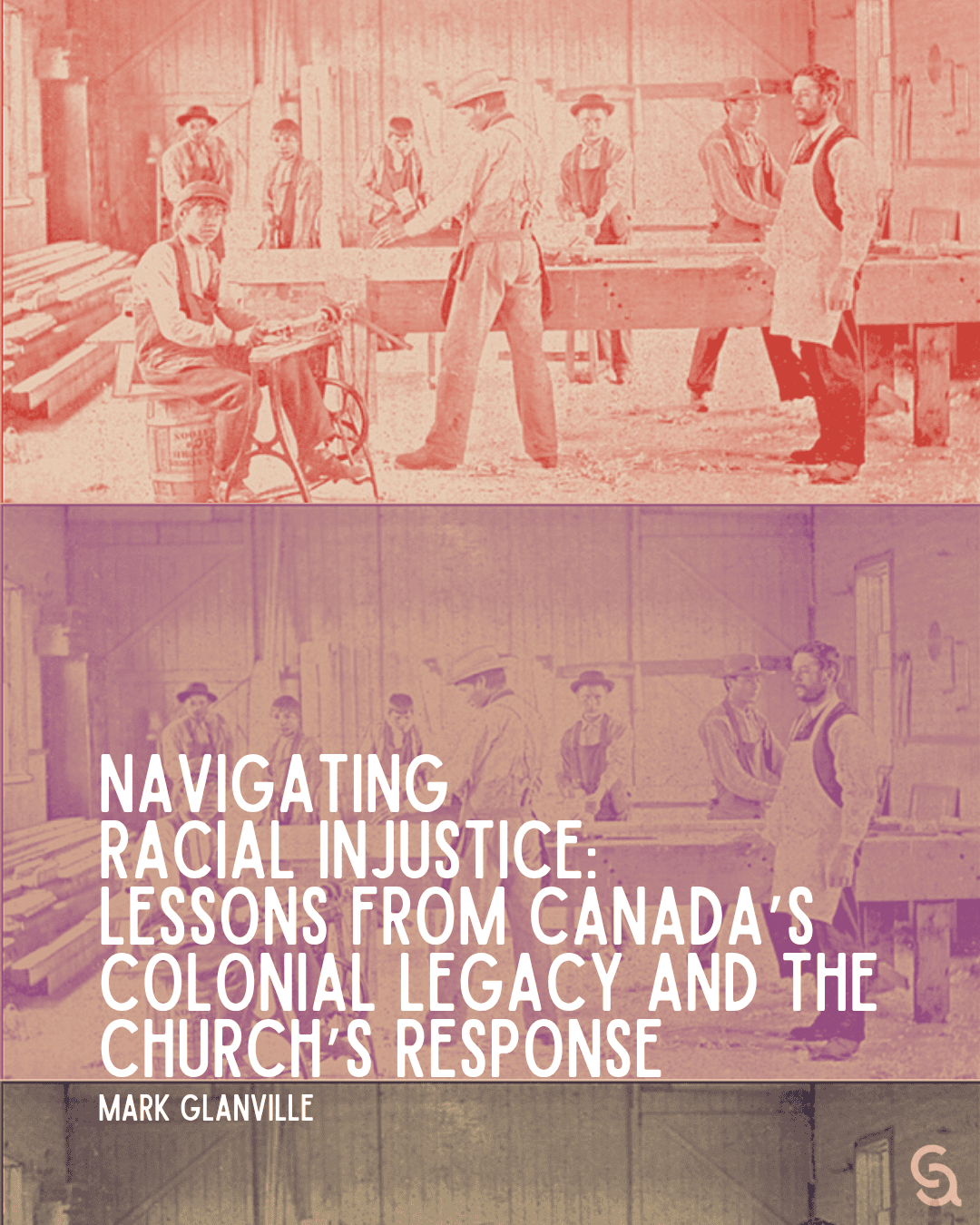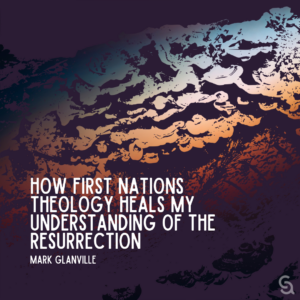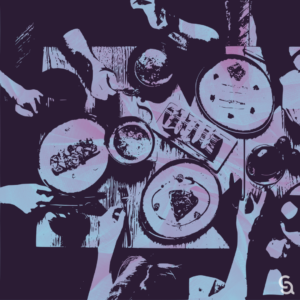
Introduction: Learning from Canada’s Journey
As we seek a path through racial injustice toward a more joyful future, it can be helpful to consider how societies outside the United States walk this path. For example, how does the United States’ northern neighbour attempt to heal from its own formative stories of injustice?
Let me tell a part of the Canadian story — its losses and gains — to find inspiration, warning, and courage. I am a dual citizen of Australia and Canada, living in Vancouver.
Wherever a community of people exists, soon enough there will be groups: in-groups and out-groups; those who benefit and those who don’t. We are tribal creatures, in the end — just watch teenagers negotiate the complex developmental task of forming friendships… it’s exhausting!
Canada is no exception. For example, when anti-Asian hate crimes rose in the United States in 2020, they rose in Canada, too. Between the onset of the COVID pandemic in March 2020 and May 2021, anti-Asian hate crimes in Vancouver increased by 717 percent.¹ During that period, a Korean student at the University of British Columbia was physically assaulted while working at a Korean food market less than 500 meters from my office.
Yet it would be a mistake to focus only on overtly racist acts. We rightly deplore the grotesque racism of white supremacist protests and physical assaults, but racism often runs deeper — embedded in systems, habits, and theological assumptions.
Sin, Evil, and Structural Racism
How we understand sin, theologically, matters. If Scripture describes sin solely as the corruption of individuals, we might conclude that racism is only expressed by strongly prejudiced people. But what if the problem of evil encompasses the whole of creation — a good world that is yet enthralled to evil (Matt. 4:8–9)? What if it includes the devil and a host of evil forces (Eph. 6:12)? What if humanity follows the “course of this world” (Eph. 2:2)?² What if evil is embedded in legal systems (Isa. 10:1–2)?
The biblical story insists that evil is both personal and cosmic, animating intricate networks of cultural systems — including racism.
White Civility and Cultural Construction
I’m among the many white majority Christians in Canada who need to learn from racialized experiences. Listening to people from minority cultures and reading wise books has helped me. One book I often recommend is White Civility by English scholar Daniel Coleman.³
Coleman explores how Canadian literature (1820–1950) constructed images of white male figures as the ideal “Canadian” hero. He identifies four significant tropes: the loyalist brother, the enterprising Scottish orphan, the muscular Christian of the Canadian West, and the maturing colonial son.
Coleman’s work shows that our idea of what it means to be “Canadian” isn’t intrinsic — it’s socially constructed through media and literature. These identities often center whiteness and masculinity.
Multicultural Aspirations and Official Policy
Yet there is more to the story. In 1971, former Prime Minister Pierre Trudeau (father of Justin Trudeau) declared multiculturalism an official policy of the Canadian government. While always aspirational, this marked a watershed moment, reframing Canada as a country constituted by many cultures — not just one dominant one.
First Peoples and the Legacy of Residential Schools
The most significant scar in Canada’s story is the relationship between First Peoples and settlers. This history is often overlooked in public discourse but must shape how the church envisions its role in society.
In 2021, over a thousand potential unmarked graves containing the remains of First Nations children were discovered on the grounds of three residential schools in British Columbia and Saskatchewan.⁵ These schools, operated mostly by churches, sought to “educate the native out of the child.” The last one closed in 1996 — just five years after I graduated high school.
In 2008, Canada established the Truth and Reconciliation Commission to document survivor stories. When it came to Vancouver, many Christ followers showed up to listen and bear witness.
It’s fair to say that the U.S. is behind both Canada and Australia in reckoning with colonial history, but all three settler states have far to go.⁷
Humble Learning and Shared Feasts
What’s the path forward for non-Indigenous churches? The first step may simply be to listen and learn. Many Canadian Christians are attending workshops, courses, and ceremonies led by First Nations leaders. My own family recently attended a local salmon feast.
These traditions can enrich our Christian faith. For example, Indigenous communities are leaders in resisting destructive resource extraction. As Cree author Doug Cuthand writes, “The land is our soul.”⁸
Intercultural Worship and Church Leadership
Some churches in Canada have developed practices of intercultural worship to reflect the diversity in their congregations. Worship that genuinely expresses the breadth of God’s people helps us know God more fully (Eph. 3:9–10). Singing in different languages is helpful, but true intercultural worship also means sharing leadership.
The best way to cultivate an intercultural church is to have culturally diverse leadership—especially among preachers and board members. These visible roles shape the identity and future of the church.
Immigration and the Church’s Cultural Calling
Immigration is central to racial justice in settler societies. Like the U.S., both Canada and Australia are built on immigrant populations—alongside First Peoples.
When former Australian Prime Minister Bob Hawke faced backlash for welcoming refugees, he replied: “We’re all bloody refugees!” His point was simple: newcomers reflect our shared story.
Still, all three countries have a history of both welcome and exclusion. Today, immigration is increasingly politicized. Some even suggest progressives should become “tough on immigration.”
But this would betray both our cultural roots and our biblical foundations. Scripture tells us: “Remember that you were strangers in Egypt.”
If immigration is unpopular, then culture-making must lead the way. Christians can host conversations rooted in real refugee stories, dispelling myths and spotlighting contributions. A wonderful example is the documentary Borderstory, produced by my wife, Erin Glanville, and available online.⁹
The Call to Culture-Making
Navigating racial injustice isn’t about quick fixes. It’s deep, deliberate work — work that involves listening, confessing, joining, and reshaping our communities.
Sometimes, lifting our eyes beyond our own borders and learning from others can help us reimagine what’s possible.
Endnotes
-
Johna Baylon and Leyland Cecco, “Attacks Make Vancouver Anti-Asian Hate Crime Capital of North America,” The Guardian, May 23, 2021.
-
All Scripture quotations are taken from the NRSVUE.
-
Daniel Coleman, White Civility: The Literary Project of English Canada (Toronto: University of Toronto Press, 2006).
-
Some First Nations communities (but not all) refer to the continent of North America as “Turtle Island.”
-
Kisha Supernant and Sean Carleton, “Fighting Denialists for the Truth about Unmarked Graves and Residential Schooling,” CBC, June 2022.
-
All First Nations, Inuit, and Métis children in Canada were compelled to attend residential school from 1920.
-
See, for example, Tantoo Cardinal, “Voices from Native America,” in First Nations Drum, December 28, 2002.
-
Doug Cuthand, Askiwina: A Cree World (Regina, SK: Coteau Books, 2007), cited in Ray Aldred, “Indigenous and Newcomers,” 49.
-
Erin Glanville, Borderstory.
This article uses text from, Mark R. Glanville, “Racism and Christian Witness,” Crux (2022): 12–22; Mark R. Glanville, Improvising Church: Scripture as the Source of Harmony, Rhythm, and Soul (IVP Academic, 2024), 90-105, 167-184.
___
Dr Mark R. Glanville works as Director of the Centre for Missional Leadership, University of British Columbia, Vancouver. Mark has cowritten Refuge Reimagined: Biblical Kinship in Global Politics with Luke Glanville. His most recent book is Preaching in a New Key: Crafting Expository Sermons in Post-Christian Neighborhoods, and he hosts the Blue Note Theology podcast.
works as Director of the Centre for Missional Leadership, University of British Columbia, Vancouver. Mark has cowritten Refuge Reimagined: Biblical Kinship in Global Politics with Luke Glanville. His most recent book is Preaching in a New Key: Crafting Expository Sermons in Post-Christian Neighborhoods, and he hosts the Blue Note Theology podcast.


